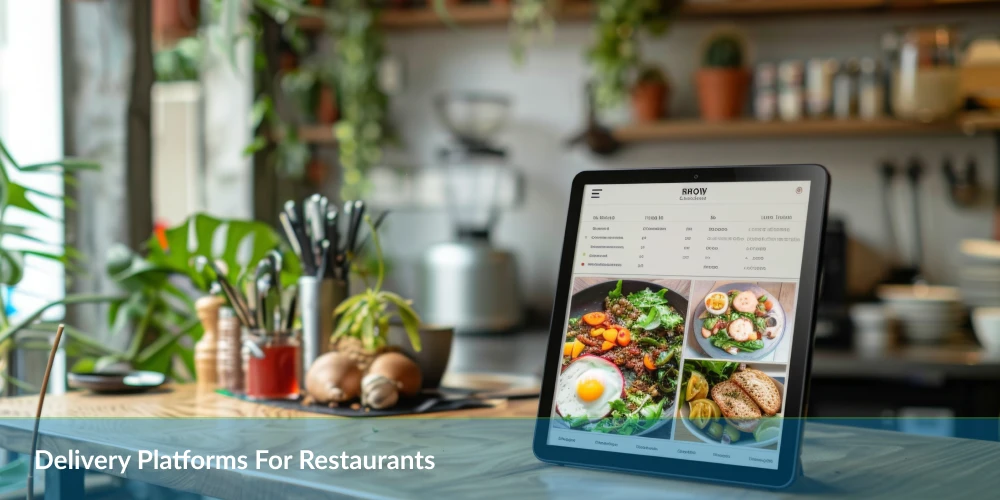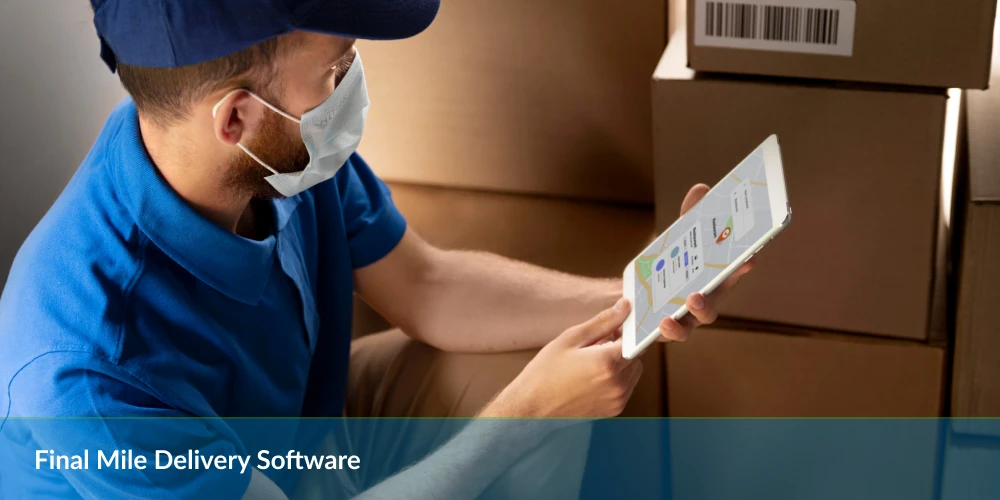Table of Contents
Somewhere in the cluttered back office of a small logistics firm, a dispatcher sits before a glowing screen, trying to match drivers to tasks before the morning rush. Just a few miles away, a customer is refreshing a tracking page, watching a little van icon crawl across a digital map. Neither realizes they are connected by a deeply intricate and unresolved question—one that predates e-commerce, GPS, and even the highway system:
How do we efficiently collect and deliver goods across multiple locations, under real-world constraints?
This is the essence of the pickup and delivery problem (PDP), a deceptively simple challenge that lies at the very core of how our world moves. It is a logistics puzzle so fundamental that it spans decades of research and billions of dollars in practical solutions. Yet it continues to evolve and surprise, resisting static answers in favor of dynamic ones.
What Is the Pickup and Delivery Problem?
In transportation logistics, the Pickup and Delivery Problem (PDP) models a class of routing problems where each transportation request has both an origin (pickup) and a destination (delivery) point. Unlike the classic Vehicle Routing Problem (VRP), which optimizes routes from a central depot to serve multiple customers, PDP enforces strict pairings: vehicles must collect items from specific locations and transport them directly to designated endpoints, preserving sequence and capacity constraints.
PDP sits at the core of operational efficiency in third-party logistics (3PL) and last-mile delivery services. These sectors deal with dynamic environments, tight delivery windows, urban congestion, and fluctuating demand. PDP models enable optimization of vehicle plans that meet time and space constraints while reducing fuel consumption, vehicle usage, and overall delivery cost. Unlike VRP, which reduces mileage by clustering stops, PDP tailors routes around pickup-delivery dependencies, making it far more complex both computationally and logistically.
The Anatomy of the Pickup and Delivery Problem
At a glance, the PDP appears almost childishly straightforward:
- You have a set of items to pick up from various locations.
- You need to deliver them to the corresponding destinations.
- You want to do this as quickly, efficiently, and cost-effectively as possible.
But here’s where the surface simplicity begins to unravel:
- Each pickup must be paired with its corresponding delivery.
- Each vehicle has capacity constraints.
- There are time windows for pickups and drop-offs.
- Traffic, weather, driver breaks, and regulatory restrictions must be accounted for.
So, how do the most advanced logistics platforms tackle this high-stakes challenge in real time? The answer lies in adaptive algorithms, real-time data, and scalable heuristics.
Why Third-Party Logistics Providers Must Solve the Pickup and Delivery Problem
The structure of modern logistics networks has shifted irreversibly. Urbanization, hyper-local delivery demands, multi-node fulfillment, and last-mile integrations have created a delivery landscape built on flux. Routes no longer follow predictable paths. Instead, they must react in real-time to an ever-changing set of variables; i.e., traffic conditions, time windows, vehicle constraints, and fluctuating demand density.
Third-party logistics providers (3PLs), operating at the intersection of diverse clients, geographic zones, and regulatory frameworks, manage networks that span hundreds of pickup and drop-off points daily. The pickup and delivery problem scales exponentially with each new client, city, and service tier added. More nodes mean more combinations, tighter time constraints, and an explosion in route options. Without adaptable strategies, this complexity erodes margin and speed.
Rising Demand for Faster, More Efficient Logistics Solutions
Consumer behavior has raised the bar permanently. Same-day and next-day deliveries are not upselling features—they’re baseline expectations. According to the 2023 eCommerce Shipping Benchmark Report by Shippo, 62% of consumers expect delivery within two days for products shipped domestically. In parallel, B2B buyers now demand similar lead times once reserved for retail shoppers.
This speed imperative compresses logistics planning cycles. Yesterday’s batch optimization models fell short when orders arrived dynamically throughout the day. PDP in this high-velocity context becomes a moving target—routes must be refined hourly, not nightly. To compete, 3PLs must deploy solutions that handle dynamic insertions, multi-constraint optimization, and rolling updates without human intervention.
How PDP Directly Impacts Cost, Delivery Accuracy, and Customer Experience
| Factor | Impact | Explanation |
| Cost Control | Increased fuel, labor, and maintenance costs | Every extra mile, due to poor routing, inflates logistics costs. Since transportation can be up to 50% of total logistics expenses, inefficiencies directly hurt profitability. |
| Delivery Accuracy | Decreased On-Time Delivery (OTD) rates | Missequenced or inefficient routes lead to missed pickups and delivery windows, disrupting tightly timed logistics and lowering delivery performance metrics. |
| Customer Satisfaction | Decline in service reputation and trust | SLA breaches caused by route issues affect client trust. 3PL partnerships remain stable only when performance is consistent and reliable. |
PDP doesn’t hide in the background. It sits at the center of whether or not a 3PL meets modern expectations and remains cost-competitive. Ready to dig into how mathematics, analytics, and machine intelligence converge to crack the code? Let’s take a closer look at the science powering high-precision delivery at scale.
Why PDP Is No Longer a Back-Office Concern
For a long time, pickup and delivery planning (PDP) was considered a background operation, handled quietly by dispatchers and logistics teams. But in today’s fast-moving, customer-first business environment, PDP is no longer a silent support function. It has become a core strategic pillar that directly impacts business success. Here’s why this shift is happening:
1. E-Commerce Has Weaponized Speed
E-commerce giants like Amazon have permanently changed consumer expectations. Two-day delivery has become the standard, while next-day and same-day deliveries are quickly gaining traction. This evolution has made delivery speed one of the most powerful tools for customer retention and brand loyalty.
In this context, even a small inefficiency in routing can stretch delivery windows and delay fulfillment. For smaller or local businesses, a late delivery is more than just an operational glitch—it is a missed opportunity to win customer trust. Effective PDP ensures tight delivery schedules, helping businesses stay competitive in a landscape where timing is everything.
2. Margins Are Shrinking
In industries like grocery delivery, courier services, and home maintenance, logistics can represent up to 30 percent of total operational costs. Transportation alone often consumes nearly half of that. With rising fuel prices and labor expenses, maintaining profitability has become increasingly difficult.
An outdated or inefficient PDP system causes vehicles to take longer routes, increasing fuel consumption and driver hours. Every additional mile driven translates to higher costs and reduced margins. Modern PDP systems, equipped with real-time data and dynamic routing, help businesses minimize these wasteful expenses and protect their bottom line.
3. Customer Experience Is Tied to Logistics
Today, every delivery is a brand interaction. Customers no longer separate your product from the experience of receiving it. A missed time window, a vague ETA, or a delivery at the wrong address does more than inconvenience the customer—it damages your brand reputation.
PDP plays a vital role in shaping that customer experience. With the right routing logic, businesses can provide accurate delivery times, communicate proactively, and adjust quickly when things change. Poor PDP, on the other hand, leads to broken promises, unhappy customers, and lost business. In sectors where competition is fierce, logistics is often the difference between a repeat customer and one who walks away.
4. Sustainability Goals Depend on Optimization
Environmental impact is now a central concern for businesses of all sizes. Many companies have set aggressive goals to cut emissions and operate more sustainably. Logistics, especially transportation, often make up a large portion of their carbon footprint.
Efficient PDP reduces unnecessary miles, lowers fuel consumption, and cuts emissions. Companies that optimize their delivery routes not only save money but also make meaningful progress toward their environmental targets. These improvements can be measured, reported, and even used as part of marketing and CSR campaigns. By showing customers that their delivery operations are eco-friendly, businesses can gain a competitive edge while supporting larger sustainability goals.
Pro Tip: Treat PDP as a revenue driver, not just a routing tool; optimized deliveries boost profits, enhance customer satisfaction, and support sustainability in one go.
The Science of Complexity: Transportation Science & the Data Behind PDP
Transportation Science lays the analytical foundation for resolving the Pickup and Delivery Problem (PDP). It combines elements of operations research, network theory, and systems engineering to model and optimize the movement of freight, vehicles, and personnel. Within logistics networks, PDP manifests a dynamic set of constraints—location-specific pickups, time-bound delivery windows, load capacities that require mathematical precision and algorithmic depth.
Vehicle Routing Problems (VRP), including PDP variants, fall under the NP-hard category in computational complexity. Exact solutions become infeasible with increasing nodes, making heuristic and metaheuristic methods necessary for large-scale applications. Here, Transportation Science provides the guiding structure to make those decisions not just faster, but contextually strategic.
Data Inputs: Structured, Clean, and Real-Time or Don’t Bother
No transport model operates effectively without solid data. Solving PDP demands high-quality inputs across several dimensions: geolocation accuracy, vehicle attributes, service times, traffic forecasts, and delivery constraints. Errors compound—the wrong pickup timestamp forces downstream rescheduling or rerouting, which amplifies cost and reduces fulfillment speed.
Real-time data availability, especially current traffic conditions and resource visibility, enables adaptive route recalculation. According to McKinsey, logistics networks utilizing dynamic routing driven by live data reduce last-mile delivery costs by up to 10%. But this advantage only materializes if the data fueling the routing engine is consistently structured and validated against operational KPIs.
Data Challenges: Incompleteness, Inconsistency, and Latency
In practice, logistics providers encounter fragmented and noisy datasets. Incomplete address records, inconsistent time zone interpretations, or non-standard format entries require considerable preprocessing. Many third-party logistics (3PL) operations rely on legacy enterprise systems incapable of integrating with geospatial APIs or real-time traffic feeds. As a result, routing decisions are made on stale or partial data, and the system fails to respond to mid-route disruptions.
Latency in telematics updates, discrepancies between planned vs. actual handoffs, and unreliable customer inputs contribute further noise. The challenge isn’t just collecting data—it’s about structuring pipeline architectures that clean, normalize, and synthesize data into decision-grade inputs. Without it, even the most advanced planning algorithms will generate suboptimal routes.
Ask this: What separates a merely functioning routing plan from a highly efficient PDP solution? The answer begins, and often ends, with data fidelity backed by Transportation Science principles.
The Role of AI and Advanced Analytics in PDP
Artificial intelligence transforms demand forecasting by moving away from historical averaging and toward dynamic, context-aware predictions. Using supervised machine learning models, such as gradient boosting and neural networks, logistics systems incorporate variables like weather, location-specific foot traffic, promotion cycles, and even social sentiment to accurately forecast pickup and delivery volumes.
For example, in high-density urban areas, deep learning models trained on multimodal data can forecast demand surges with over 90% precision within 6- to 12-hour horizons. These predictions allow systems to automatically trigger advanced resource allocation, resulting in fewer idle miles and optimized vehicle load rates.
AI also accelerates the process of clustering orders based on spatiotemporal similarities. Instead of relying on rigid rules, unsupervised learning algorithmsparticularly DBSCAN (Density-Based Spatial Clustering of Applications with Noise), identify dynamic order groupings that maximize delivery efficiency while aligning with customer preferences.
Real-Time Anomaly Detection in Delivery Networks
Machine learning models identify anomalies in delivery flow by continuously analyzing live telemetry, GPS data, and route logs. Recurrent neural networks (RNNs) and long short-term memory (LSTM) architectures process time-series data to detect deviations from normal route behavior, flagging route delays, unscheduled stops, or vehicular underperformance without human intervention.
Consider a delivery network operating across 50 cities; AI-enabled anomaly detection can scan real-time feeds from thousands of vehicles and detect route inefficiencies within seconds. This real-time detection supports immediate rerouting or resource redistribution. Logistic operators no longer need to wait for end-of-day reporting; corrective action can begin before a customer notices a delay.
AI-Enabled Customer Time Window Management and Preferences Customization
AI models improve time window allocation not by tightening them, but by learning from customer behavior to dynamically personalize delivery slots. Bayesian inference and reinforcement learning techniques evaluate historical acceptance rates, past reschedule patterns, and neighborhood-level logistical constraints to suggest highly probable delivery times for each customer.
This reduces failed delivery attempts by up to 35%, based on benchmark studies from last-mile providers using RL-based time slot management. Moreover, the system adapts over time, automatically refining predictions as more data accumulates, which enhances model relevance in volatile environments like festive seasons or B2B scheduling spikes.
- Customers receive time windows aligned with their real preferences, not just standardized options.
- Operators gain greater route density without sacrificing customer satisfaction.
- AI engines continuously optimize time windows, correlating delivery success rates with real-world constraints.
At scale, this synergy between AI and operational planning orchestrates a PDP architecture that is not only optimized but responsive, perceptive, and self-correcting.
Sustainability, Fuel Efficiency & Cost Minimization in the Pickup and Delivery Problem
Reducing environmental impact in logistics starts with smarter routing. Algorithms that minimize total distance traveled directly cut vehicle emissions. The Vehicle Routing Problem with Time Windows (VRPTW), adapted for PDP constraints, enables tighter scheduling and fewer miles. Incorporating real-time traffic data and dynamic route reconfiguration avoids idling and congestion, leading to lower carbon output per delivery.
Fleet-level optimization models assign pickups and deliveries not just based on proximity but based on emission output per asset. Electric and hybrid vehicles can be prioritized for high-frequency urban routes, while fuel-heavy vehicles take fewer, consolidated trips. These assignment strategies, when driven by mixed-integer programming or heuristic-based AI, result in lower route-level emissions without sacrificing service levels.
How Fuel-Efficient Routes Translate to Long-Term Cost Savings
Fuel accounts for roughly 25% to 35% of total fleet operating costs, according to data from the American Transportation Research Institute (ATRI). Reducing travel distance by even 10% cuts fuel expenses significantly. Multi-stop routing algorithms that maximize stop-to-stop efficiency, just shortest-path travel, generate compound cost savings over time, particularly in dense delivery networks.
- Stop sequence optimization lowers acceleration and braking cycles, reducing fuel burn rates.
- Vehicle capacity maximization minimizes the number of trips originating from depots.
- Night-time or off-peak deliveries reduce time in traffic, cutting idling fuel waste.
Over the span of 12 months, a mid-size logistics fleet using optimized route planning can cut fuel costs by up to 15%. These savings scale aggressively in multi-depot, multi-region operations. Every drop of fuel saved feeds back into OPEX reduction, improving EBITDA margins for third-party logistics operations.
Green Logistics and Its Alignment with PDP-Solving Technologies
Green logistics aligns organically with the mathematical structure of the pickup and delivery problem. Algorithms designed to reduce total route distance, idle time, and redundant trip chaining also support sustainability benchmarks. This dual outcome isn’t coincidental—carbon efficiency and operational efficiency share the same optimization variables: distance, time, and capacity utilization.
Technologies such as AI-based load packing, digital twins for real-time route adjustment, and machine learning models built on predictive demand forecasting are transforming logistics into a zero-waste framework. Fleet electrification integration, powered by route algorithms receptive to charging deceleration zones and grid availability, embeds sustainability at the core of PDP solutions.
- Dynamic PDP solutions adjust routing based on vehicle emissions profiles.
- Machine learning models predict low-carbon delivery times by combining historic and real-time data.
- Cloud-based simulation tools allow planners to model emission scenarios before go-live decisions.
When sustainability targets are built into PDP-solving frameworks, emissions reductions follow as measurable outcomes, not best-effort guesses. Today’s pickup and delivery optimization isn’t tangential to environmental goals; it defines the path to them.
PDP Across Geographies and Markets
The pickup and delivery problem manifests differently in dense urban cores versus sparsely populated rural zones. Cities demand high-frequency, low-volume deliveries constrained by traffic congestion, parking scarcity, and restrictive delivery time windows. In contrast, rural routes cover longer distances with lower stop density, prioritizing route efficiency and fuel minimization over delivery speed.
In urban environments like New York City or London, the average commercial delivery vehicle completes between 100 to 300 stops per day, according to data analyzed by INRIX and the Department for Transportation. These vehicles face idle times due to congestion that increase operational costs by up to 20%. To counter this, optimization algorithms must factor in dynamic traffic data, real-time parking availability, and micro-depot distribution models.
Meanwhile, rural PDP optimization prioritizes line-haul efficiency. Longer travel distances with widely spaced destinations demand vehicle routing algorithms that reduce empty miles. Solutions such as cluster mapping and time window relaxation dramatically cut average delivery time per package by as much as 25%, based on findings from the European Conference on Mobility Management.
Location-Specific Demand Mapping with Geospatial Data
Demand patterns vary by geography, and advanced demand modeling tools now incorporate satellite imagery, historical delivery data, commercial density maps, and customer ordering behavior to generate hyper-local PDP maps. Geographic Information Systems (GIS) integrate these data layers for precise volume prediction at the street or zone level.
For example, in São Paulo, last-mile logistics providers use real-time heatmaps to predict spike zones based on seasonality and socio-economic shifts. Operators using predictive geospatial modeling reduce missed deliveries by 18% and increase delivery density by over 30% in target neighborhoods.
These insights allow companies to pre-position inventory, dynamically shift fleet composition, and even deploy alternate delivery modes — e-bikes, foot deliveries, or parcel lockers, depending on microclimate logistics profiles observed through spatial analytics.
Customizing PDP for Local Regulations, Behavior, and Vehicles
Across markets, PDP frameworks require localized rule sets. Traffic policies, vehicle restrictions, emission zones, noise regulations, and consumer behavior force companies to re-engineer logistics strategies.
- In Amsterdam, where emissions-free delivery zones apply, electric cargo bikes replace diesel vans to meet PDP needs within a 3 km radius, significantly reducing carbon per package delivered.
- In Tokyo, where apartment delivery lockers are ubiquitous, route planning incorporates consolidated drop-offs compatible with RFID-secured lockers, cutting delivery failure rates under 3%.
- In Nairobi, unpaved roads and informal addressing shape vehicle selection and driver routing; motorcycles equipped with GPS-enabled mobile apps become the preferred PDP platform.
Customer behavior further complicates standardization. High re-delivery attempts in certain regions. For instance, Southern Europe sees 30% higher first-attempt failure than Northern Europe, necessitating dynamic communication tools, SMS pre-alerts, or real-time support integration to ensure route productivity remains intact.
By integrating local regulations, socio-behavioral patterns, and infrastructure variables directly into algorithmic PDP models, logistics providers unlock precision and resilience across markets with radically different baseline conditions.
Pro Tip: Localize your PDP strategy by aligning with regional infrastructure, regulations, and customer behavior, since what works in one city may not succeed in another.
Key Takeaways
- The PDP Is a Strategic, Not Just Operational, Concern
The pickup and delivery problem is no longer confined to dispatch rooms; it’s a business-critical challenge that influences profitability, customer satisfaction, and brand perception.
- Solving PDP Requires More Than Just Algorithms
While route planning algorithms and AI play a vital role, real-world complexities like traffic unpredictability, human decisions, and dynamic demand require adaptable, data-driven systems with built-in flexibility.
- Customer Experience Is Inseparable from Route Optimization
Efficient PDP execution directly impacts customer trust through accurate ETAs, reduced missed deliveries, and proactive communication, especially in e-commerce and service-driven sectors.
- Modern PDP Solutions Are Powered by Real-Time Data and Telematics
Advanced logistics leaders leverage machine learning, real-time tracking, and driver feedback to continuously refine delivery strategies and scale reliably across different markets.
- The Future of PDP Lies in Predictive, Ethical, and Customer-Centric Design
From autonomous vehicles to eco-conscious routing and preference-based delivery windows, the next generation of PDP strategy integrates regulatory compliance, environmental goals, and human preferences into logistics systems.
Wrapping It Up!
The pickup and delivery problem is not a challenge that can be solved once and for all. It is a continuous, evolving reality shaped by geography, customer expectations, traffic patterns, regulatory shifts, and operational constraints. Its complexity is not a flaw in the system, but a reflection of how the world truly works. Movement always involves decisions, trade-offs, and opportunities for improvement.
Businesses that approach PDP as a static, technical problem risk missing its deeper potential. On the other hand, those who see it as an ongoing lens for improvement can refine their logistics strategy, enhance customer satisfaction, and build lasting operational strength.
PDP is no longer just about planning routes or minimizing miles. It is a strategic function that touches cost efficiency, service quality, environmental impact, and brand experience. Companies that embrace this dynamic nature are better equipped to adapt to change, respond to demand fluctuations, and stay competitive in fast-moving markets.
Solving PDP is not a one-time project. It is a daily discipline. And within that discipline lies the key to building agility, resilience, and long-term success.
Ready to Master PDP with Precision? NetworkON gives your business the tools to turn pickup and delivery into a strategic advantage. With advanced features such as real-time route optimization, geofencing, live tracking, and intelligent dispatching, NetworkON helps you manage complex logistics with simplicity and speed.
Whether you’re operating in dense cities or remote regions, NetworkON adapts to your environment, customer needs, and business goals.
Take control of your delivery operations, reduce costs, and exceed customer expectations.
Book a demo with NetworkON today and see how smarter PDP can power your next stage of growth.
Frequently Asked Questions
Q1: What is the Pickup and Delivery Problem (PDP)?
The PDP refers to the logistics challenge of efficiently pairing item pickups with corresponding deliveries while honoring time, vehicle, and capacity constraints. It’s a complex variation of the vehicle routing problem (VRP).
Q2: How does solving PDP improve delivery operations?
By optimizing routes based on real-time constraints and predictive data, businesses can reduce delivery times, lower costs, increase on-time performance, and improve customer satisfaction.
Q3: What technologies are used to solve PDP?
Advanced route planning algorithms, AI/ML for forecasting and anomaly detection, telematics systems, dynamic dispatch software, and micro-fulfillment strategies are key tools in modern PDP solutions.
Q4: Why is PDP considered a continuous challenge?
Because real-world logistics are constantly shifting, due to traffic, weather, customer behavior, and market trends, PDP is not a one-time problem but a dynamic, ongoing optimization task.





0 Conversations